What to expect from remote learning management systems during the Coronavirus outbreak
As schools around the globe close down to deal with the coronavirus, administrators are looking into practical solutions for holding classes remotely. Here are some of the most widely utilized tools you may encounter.
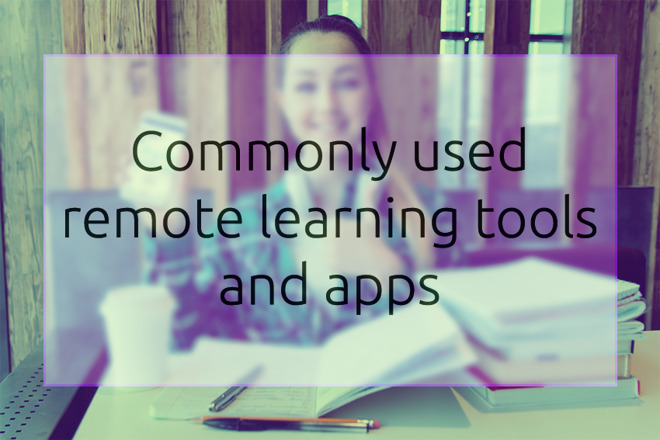
As COVID-19 continues to shut down schools and colleges worldwide, many schools have begun exploring ways to hold classes remotely to avoid delaying the progress of their students.
For most colleges, there's likely already a system in place, and an instructor will simply need to place their course content online. However, for high schools and trade schools, there may be a somewhat rocky period where they rush to set up a remote teaching solution.
The change could be stressful for students who have not had to do self-directed learning, but fortunately much of the software you'll encounter is user-friendly.
We've compiled a helpful introduction to some of the most commonly used remote learning tools you may encounter during the next few months.
What this article does not cover is proper configuration of them on the student side, nor does it address bandwidth concerns. Talk to your school's information technology department if you have any specific questions.
Typically, a LMS will have a few standard features, such as allowing an instructor to post assignments, an academic calendar, and the ability to host media. Many LMSs also allow for interactive learning, quiz and test taking, and voice and video conferencing.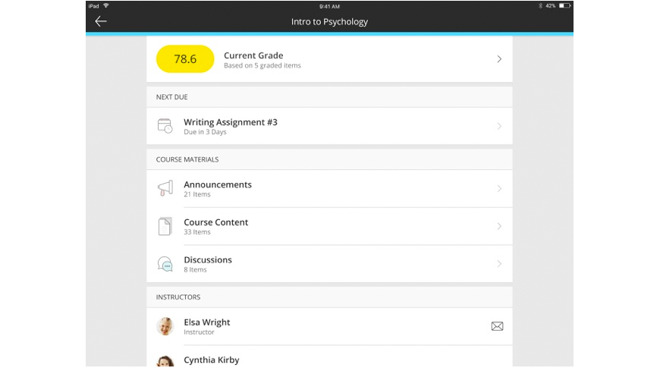
Blackboard Learn was one of the first widely-used LMSs, coming into existence in the late 1990s. It has a 31% market share in the United States.
Schools such as North Dakota University, Northwest Florida State University, Bellevue University, and Texas A&M use Blackboard.
Blackboard allows instructors to set up course content pages, allowing them to easily post articles, assignments, and more. It includes a built-in academic calendar function, learning modules, and a real-time activity stream so students can keep tabs on any content uploaded by their instructor.
Blackboard can be accessed from your school's Blackboard page, but also from the iOS and Android apps. If you plan on using the Blackboard app, it requires iOS 11.0 or later and is compatible with iPhone, iPad, and iPod touch.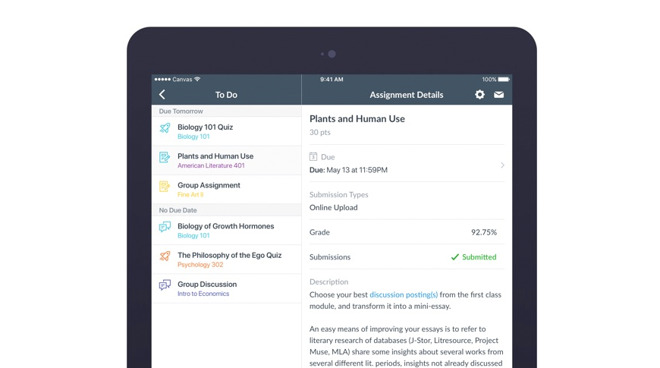
Canvas is the second most widely used LMSs, with 30% of the U.S. market share. More than 3000 institutions use it worldwide, with over 530 of them being located in the United States.
It's used by universities such as Penn State University, University of Maryland, University of Washington, University of Texas, and University of Pennsylvania.
The system allows instructors to create customizable course pages that host a variety of different tools. Instructors can set up discussion forums, tests and quizzes, interactive presentations, and host audio and video. Additionally, Canvas also features a built in messaging system and the ability to customize both student and instructor profiles.
Canvas can be accessed from your desktop browser, but also features both iOS and Android apps. If you plan on using the Canvas iOS app, it requires iOS 12.0 or later and is compatible with iPhone, iPad, and iPod touch.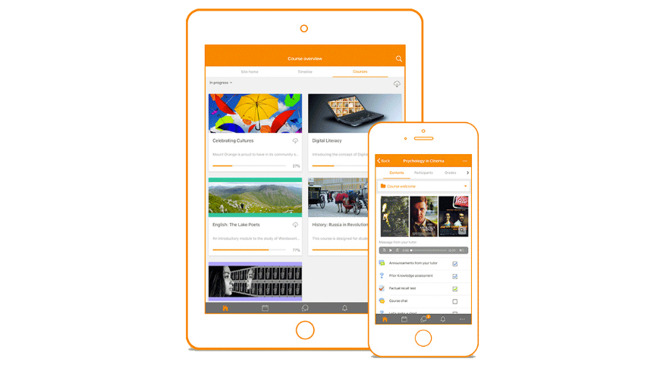
Moodle is another popular LMS, with 18% of the market share in the U.S., and 50% of the market share in Europe, Latin America, and Oceania.
Moodle owes at least part of its success to the fact that it is free and open source. Schools like University of Louisiana, University of Massachusetts, Iowa State University, and University of California use Moodle, and have for some time.
Moodle is often lauded for its support of third-party plugins, including plugins that allow for integration of other popular services, such as Wordpress. It's also praised for its ease-of-use and detailed reporting logs.
Like other LMSs, Moodle can be access from most browsers, but also features an iOS and Android app. If you want to use the iOS app, it requires iOS 10.0 or later and is compatible with iPhone, iPad, and iPod touch.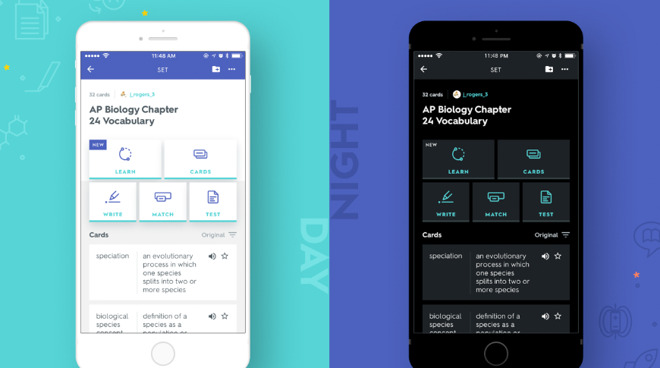
While it's not a learning management system, Quizlet is an easy-to-use web-based program that gives users the ability to create custom learning materials for themselves.
Quizlet gives users the chance to create sharable flash cards and educational mini-games. Many instructors may choose to utilize Quizlet to help students memorize key concepts from lessons in preparation for remote testing.
Quizlet's learning tools are available in browser, but they are primarily designed to be used with the iOS or Android app. Quilt requires iOS 11.0 or later.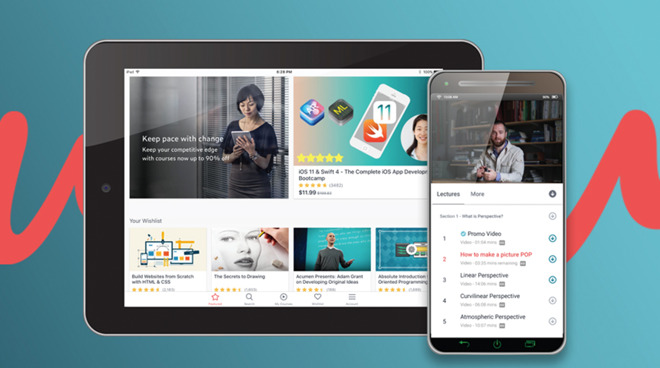
Udemy is an online learning platform that allows institutions to create online courses quickly and easily, without the self-hosting requirements of many learning management systems. Udemy can host video, PowerPoint, PDF, audio, and zip files. It can also host streaming video, allowing for students to attend class in real-time.
Udemy offers an iOS and Apple TV app, as well as an Android app. Those who plan on using the iOS app will need a device on iOS 11.0 or later.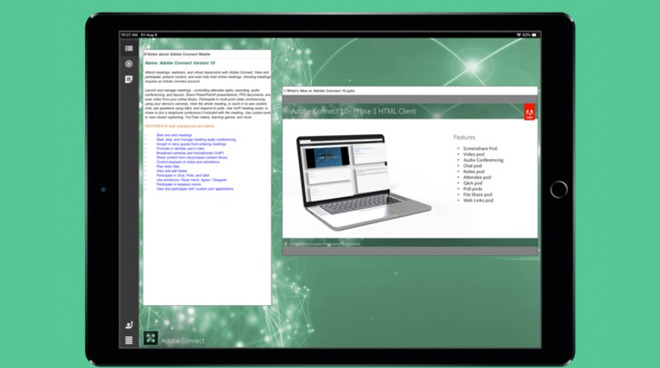
While not explicitly a learning tool, Adobe Connect is an easy way for schools to hold live classes remotely. It allows instructors the ability to hold a live conference call that features audio and video, as well as desktop sharing and general presentations. There's even a feature that allows viewers to "raise their hands" to participate in the discussion or ask questions.
Adobe Connect is most commonly used via a browser, though there is a somewhat poorly rated iOS app. The Adobe Connect app requires iOS 8.0 or later and is compatible with a wide array of iPhone, iPad, and iPod touch models dating back seven years.

As COVID-19 continues to shut down schools and colleges worldwide, many schools have begun exploring ways to hold classes remotely to avoid delaying the progress of their students.
For most colleges, there's likely already a system in place, and an instructor will simply need to place their course content online. However, for high schools and trade schools, there may be a somewhat rocky period where they rush to set up a remote teaching solution.
The change could be stressful for students who have not had to do self-directed learning, but fortunately much of the software you'll encounter is user-friendly.
We've compiled a helpful introduction to some of the most commonly used remote learning tools you may encounter during the next few months.
What this article does not cover is proper configuration of them on the student side, nor does it address bandwidth concerns. Talk to your school's information technology department if you have any specific questions.
Learning Management Systems
A Learning Management System, or LMS, is a web-hosted software application that allows a school and its instructors to host a variety of learning materials online. Many universities in the United States, as well as plenty of institutions globally, have adopted at least partial LMS integration for their students.Typically, a LMS will have a few standard features, such as allowing an instructor to post assignments, an academic calendar, and the ability to host media. Many LMSs also allow for interactive learning, quiz and test taking, and voice and video conferencing.
Blackboard Learn

Blackboard Learn was one of the first widely-used LMSs, coming into existence in the late 1990s. It has a 31% market share in the United States.
Schools such as North Dakota University, Northwest Florida State University, Bellevue University, and Texas A&M use Blackboard.
Blackboard allows instructors to set up course content pages, allowing them to easily post articles, assignments, and more. It includes a built-in academic calendar function, learning modules, and a real-time activity stream so students can keep tabs on any content uploaded by their instructor.
Blackboard can be accessed from your school's Blackboard page, but also from the iOS and Android apps. If you plan on using the Blackboard app, it requires iOS 11.0 or later and is compatible with iPhone, iPad, and iPod touch.
Canvas

Canvas is the second most widely used LMSs, with 30% of the U.S. market share. More than 3000 institutions use it worldwide, with over 530 of them being located in the United States.
It's used by universities such as Penn State University, University of Maryland, University of Washington, University of Texas, and University of Pennsylvania.
The system allows instructors to create customizable course pages that host a variety of different tools. Instructors can set up discussion forums, tests and quizzes, interactive presentations, and host audio and video. Additionally, Canvas also features a built in messaging system and the ability to customize both student and instructor profiles.
Canvas can be accessed from your desktop browser, but also features both iOS and Android apps. If you plan on using the Canvas iOS app, it requires iOS 12.0 or later and is compatible with iPhone, iPad, and iPod touch.
Moodle

Moodle is another popular LMS, with 18% of the market share in the U.S., and 50% of the market share in Europe, Latin America, and Oceania.
Moodle owes at least part of its success to the fact that it is free and open source. Schools like University of Louisiana, University of Massachusetts, Iowa State University, and University of California use Moodle, and have for some time.
Moodle is often lauded for its support of third-party plugins, including plugins that allow for integration of other popular services, such as Wordpress. It's also praised for its ease-of-use and detailed reporting logs.
Like other LMSs, Moodle can be access from most browsers, but also features an iOS and Android app. If you want to use the iOS app, it requires iOS 10.0 or later and is compatible with iPhone, iPad, and iPod touch.
Other popular web-based learning tools
Learning management systems aren't the only tools out there for teachers to utilize. During this transitional period, your school may begin exploring other tools to help with online learning.Quizlet

While it's not a learning management system, Quizlet is an easy-to-use web-based program that gives users the ability to create custom learning materials for themselves.
Quizlet gives users the chance to create sharable flash cards and educational mini-games. Many instructors may choose to utilize Quizlet to help students memorize key concepts from lessons in preparation for remote testing.
Quizlet's learning tools are available in browser, but they are primarily designed to be used with the iOS or Android app. Quilt requires iOS 11.0 or later.
Udemy

Udemy is an online learning platform that allows institutions to create online courses quickly and easily, without the self-hosting requirements of many learning management systems. Udemy can host video, PowerPoint, PDF, audio, and zip files. It can also host streaming video, allowing for students to attend class in real-time.
Udemy offers an iOS and Apple TV app, as well as an Android app. Those who plan on using the iOS app will need a device on iOS 11.0 or later.
Adobe Connect

While not explicitly a learning tool, Adobe Connect is an easy way for schools to hold live classes remotely. It allows instructors the ability to hold a live conference call that features audio and video, as well as desktop sharing and general presentations. There's even a feature that allows viewers to "raise their hands" to participate in the discussion or ask questions.
Adobe Connect is most commonly used via a browser, though there is a somewhat poorly rated iOS app. The Adobe Connect app requires iOS 8.0 or later and is compatible with a wide array of iPhone, iPad, and iPod touch models dating back seven years.

Comments
Perhaps in a few years, but not now. And, that's assuming that Google doesn't kill it before then.
https://edu.google.com/latest-news/covid-19-support-resources/?modal_active=none&topic=view-all
This is just one of the thousands of schools using "Distance learning" while their classrooms are closed. Some schools plan for eventualities like an extended closure. Learning doesn't need to stop.
https://ccsd21.org/information-services/chromebook-information/chromebooks-at-home/
and the explanation of just how organized it is
https://ccsd21.org/coronavirus/
Hardly Mike. I'm not sure your up-to-date on it. For instance look into Distance Learning provided by Google for Education.
https://blog.google/outreach-initiatives/education/distancelearning-covid19/
Here's one school's guidelines while their classrooms are closed due to the Coronavirus dangers.
"Distance Learning Expectations
Teachers will communicate with their students/parents via Google Classroom, Seesaw, Class Dojo, e-mail, or some other appropriate vehicle of electronic communication outlining the expectations for the day no later than 9:00 AM on the Distance Learning Day. This communication will inform students if they are accessing lessons on the CCSD21 Distance Learning Google Site or other lessons designed by their teachers.
Teachers will also make an electronic ‘roll call’ at various times throughout the day, though the first ‘roll call’ each day will consistently be made at 9:00 AM. Teachers will be available during normal school hours for support. Families working on Distance Learning activities outside of school hours are encouraged to message their teacher for support; teachers will respond during the next Distance Learning day.
The CCSD21 Online Learning Tools for Students and Families document offers tips for accessing students’ Google account, video guidance on navigating learning tools, and care for Chromebooks. This guide will also be updated periodically.
Paper options for completing distance learning are also available for pick up from the student’s school. Parents can request the materials by completing this form or calling their child’s school and leaving a message.
Daily Attendance
Please complete the appropriate attendance form for each child for each Distance Learning Day. Submitting this form acknowledges your child has completed the required Distance Learning activities for the day. Families unable to submit an electronic attendance form will be asked to complete a paper CCSD21 Distance Learning Day Attendance Form (PDF Attendance Form) when school resumes."
School is still in session, just at home.
I'm glad some folks like it and use it.
Is it possible your educator contributor base is only familiar with Mac/iOS solutions?
FWIW there's well in access of 40M Google Classrooms subscribers today, and likely 100 million GSuite for Education users (80 million a year ago), far outpacing every other provider to education on your list AFAICT. It's not just in the US either, with a significant presence in Japan, Australia, Norway, Brazil, New Zealand and many other countries. You're selling the advantages short IMO.
The upshot is, the teachers we've spoken to prefer the above solutions that we've discussed in the piece, to Google's.
As a parent, I've found the Blackboard and Moodle I've tested to be better for my children.
Oh and about that integrated gradebook:
https://www.additioapp.com/en/google-classroom/
I'm not sure why you're pounding the drum so loudly on it, though.
I believe you're giving short shrift to one of the most full-featured, easily managed, and affordable ones, not even giving it a mention other than "it's limited, maybe in a few years".
Some of the ones you did mention as worthy considerations actually ARE limited, extremely so, such as Adobe's.
https://www.microsoft.com/en-us/microsoft-365/academic/compare-office-365-education-plans
My son's school adopted Google Classroom, which includes Google Meet and Google Chat (same as Google Hangouts). Today was the first day that the school conducted the entire school day on this distant-learning platform. The platform held up amazingly well. The video and audio quality was excellent.
I'm a Sr. Cisco Collaboration Consultant, so I know quite a bit about Cisco WebEx as well as Zoom. Google Hangouts really impressed me yesterday (while we were testing) and today during my son's first distance-learning school day. Cisco WebEx has a lot of issues compared to Google Hangouts. Additionally, today Google has seen a dramatic increase in the use of Google Hangouts / Google Meet due to millions of students having their first distant-learning school day.
Google Classroom app (free) is the #1 education app on Android.
On the App Store Google Classroom is also the most popular education app according to AppBrain.